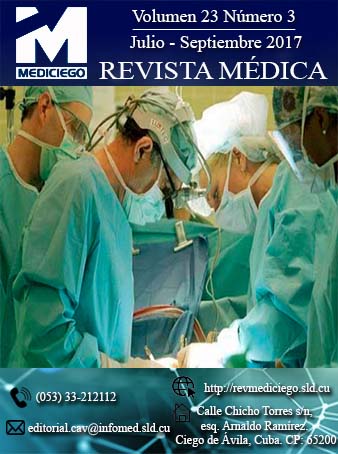Prophylaxis of arterial hypotension in emergency caesarean section
Abstract
Introduction: subarachnoid anesthesia is the most used anesthetic technique during surgery for cesarean section and hypotension is the most frequent complication derived from its use.
Objective: to evaluate the efficacy of the use of isotonic solution and ephedrine in the prevention of hypotension secondary to subarachnoid blockade in patients operated by emergency caesarean sections in the General Provincial Teaching Hospital "Dr. Antonio Luaces Iraola" of Ciego de Ávila.
Method: an experimental study was carried out in the period from January to December 2014 in a population of 340 patients, randomly distributed in two groups. In group A, vascular filling was used with isotonic saline prior to subarachnoid anesthesia. In the patients of group B, the same method was used, but administering in addition 10 mg of ephedrine intravenously immediately after applying the anesthetic technique.
Results: patients in group B had a lower rate of arterial hypotension, and needed lower doses of ephedrine to stabilize blood pressure.
Conclusions: the combined use of ephedrine and isotonic saline solution is the most effective method in the prophylaxis of hypotension triggered by subarachnoid anesthesia during emergency caesarean sectionDownloads
Published
How to Cite
Issue
Section
License
Mediciego is licensed under a Creative Commons Attribution/NonCommercial Attribution 4.0 International Public License, so you may copy, reproduce, distribute, publicly perform and generate derivative works, provided you cite and acknowledge the original author. However, it is not allowed to use the original work for commercial or lucrative purposes.

























